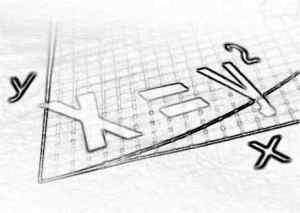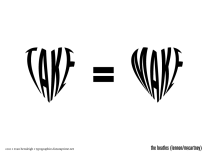Doing the Math; Not Necessary!
By John Greco
Originally published on March 9, 2012
Re-posted with permission from johnponders blog
 “I regard it in fact as the great advantage of the mathematical technique that it allows us to describe, by means of algebraic equations, the general character of a pattern even where we are ignorant of the numerical values which will determine its particular manifestation.”
“I regard it in fact as the great advantage of the mathematical technique that it allows us to describe, by means of algebraic equations, the general character of a pattern even where we are ignorant of the numerical values which will determine its particular manifestation.”
— Friedrich August von Hayek
Say what? Algebraic equations? Where might this be going?!?
Here goes: we can equate certain actions, or conditions, or results — without applying numerical rigor — and yet produce a meaningful, insightful, valuable answer.
I’m going to attempt to do Friedrich proud… While my finance, accounting, and engineering friends might cringe, I am going to pose a couple of equations that I think are incredibly meaningful in describing organizational life, yet they require no calculation whatsoever. I call them my “engagement equations.”
First up: Involvement = Commitment.
The general idea here is that as we involve people in diagnosing and solving problems, their commitment to carrying out the resulting course of action grows stronger. Hence, more involvement means increased commitment.
That’s the proactive application of the equation. The reactive application might be when we see low commitment, we should suspect low involvement. And the prescriptive: if leaders want a more committed workforce, they should first seek to involve the workforce in diagnosing why there is low commitment!
Bottom line, we can equate commitment with involvement and be pretty confident it’s not a false equivalence.
I promised two, so next up: Performance = Freedom.
This one’s about the length of the leash. It prompts us to consider that when an individual or team is performing well, we should allow them more space, more autonomy, more freedom. We might get even more performance …
And, of course, there is the flip side: when performance is slipping, more attention might be warranted. Narrow the range, focus on the action.
 (I feel compelled to counter a possible negative perception of this last point by noting that isn’t it a very good thing if a manager sees when an associate or team is struggling, and at the right time and in the right way enters the picture and provides just the right amount of help to get back on the right track? Less freedom is not always a bad thing!)
(I feel compelled to counter a possible negative perception of this last point by noting that isn’t it a very good thing if a manager sees when an associate or team is struggling, and at the right time and in the right way enters the picture and provides just the right amount of help to get back on the right track? Less freedom is not always a bad thing!)Shifting our attention to the other side of the equal sign, freedom — autonomy — when earned by performing, can move performance to yet another level; and when there is no freedom, it might very well be thecause of the lagging performance, and not the effect.
Before I close, I can’t help but point out a bit of irony I see when looking at these two engagement equations together… One says “come closer, get involved” whereas the other suggests “I should leave you alone; you’re good!”
And what about the synergy? Involvement equals commitment can driveperformance, and performance equals freedom can enhance commitment!
So there you go, my “engagement equations” … which, honestly, factor into a lot of my work when seeking to improve organizational effectiveness. And I thought I’d never apply that algebra class in real life…
 I look forward to seeing the ones that you’ve run across!
I look forward to seeing the ones that you’ve run across!Lastly, in closing, one more — a bonus! — a pretty well known non-mathematical equation, presented in song! from none other than Sir Paul McCartney and his Beatle buddies —
And, in the end, the love you take, is equal to the love you make.

